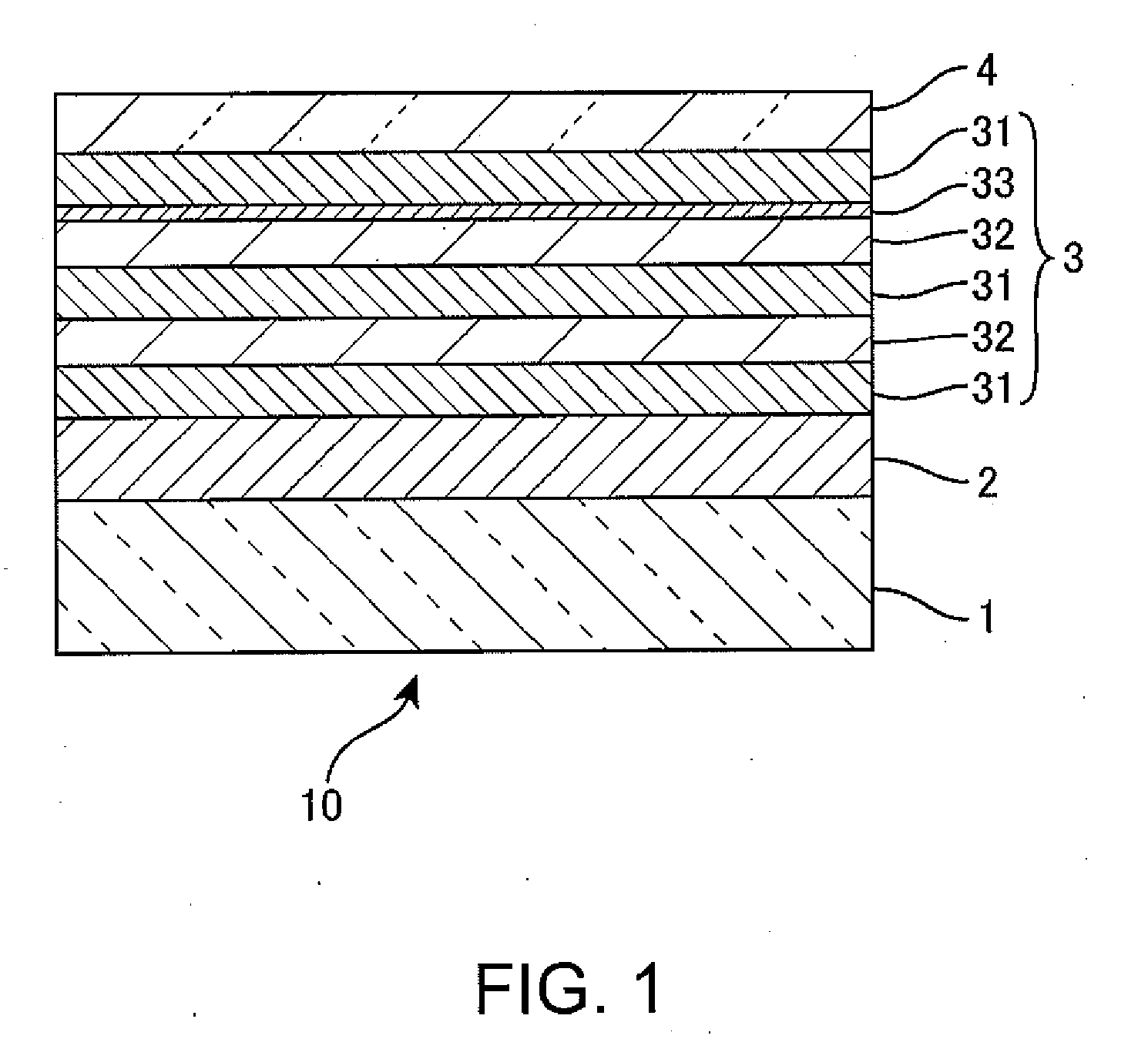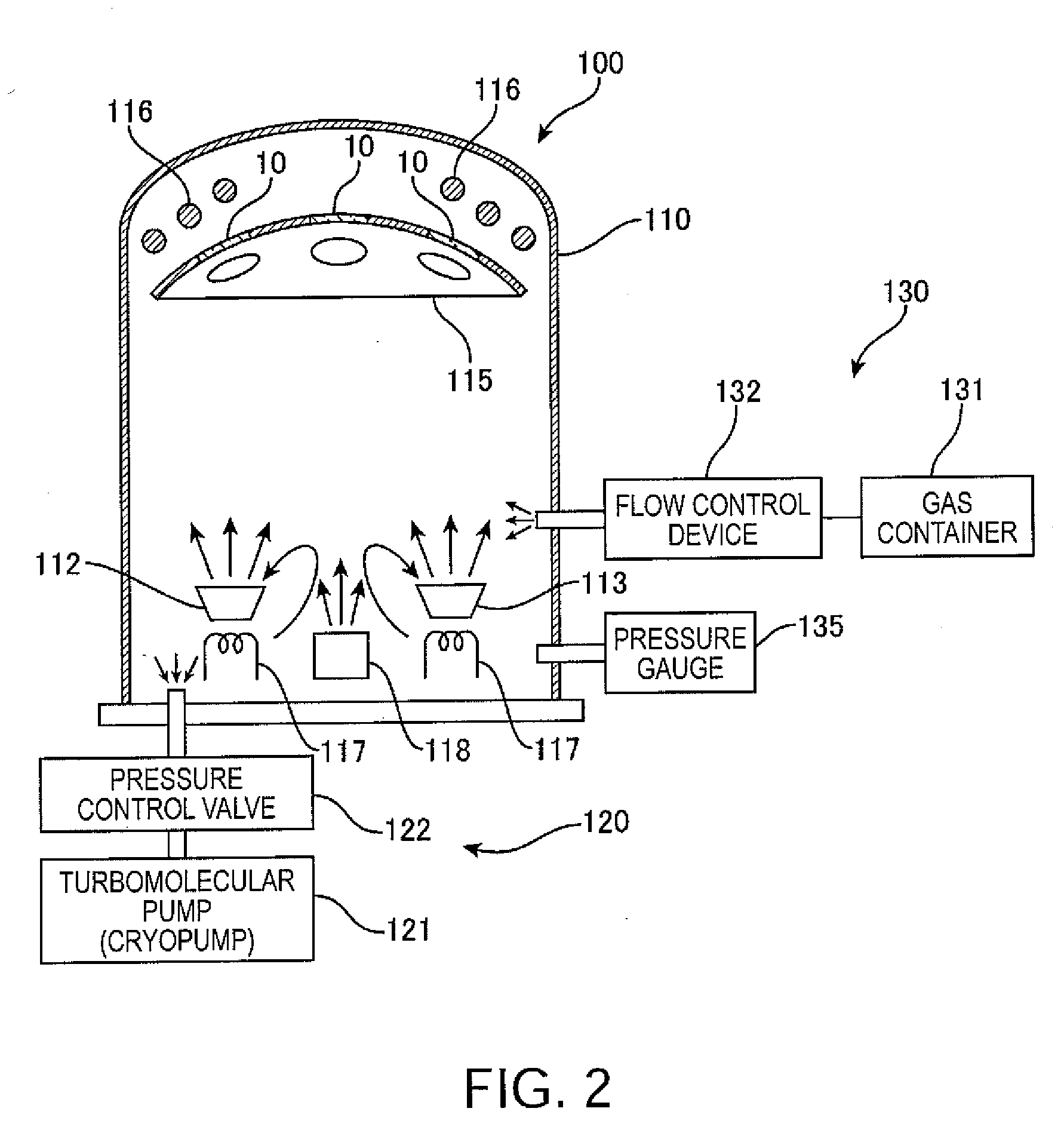Optical Article and Method for Producing the Same
- Summary
- Abstract
- Description
- Claims
- Application Information
AI Technical Summary
Benefits of technology
Problems solved by technology
Method used
Image
Examples
example 1
2.1 Example 1
Sample S1
2.1.1 Selection of Lens Substrate and Formation of Hard Coating Layer
[0057]A coating liquid for forming a hard coating layer 2 was prepared as follows. First, 4.46 parts by weight of acid anhydride curing agent (trade name: liquid curing agent (C2) (manufactured by Arakawa Chemical Industries)) was mixed with 20 parts by weight of epoxy resin / silica hybrid (trade name: Compoceran E102 (manufactured by Arakawa Chemical Industries)), and stirred to give a coating liquid. The obtained coating liquid was applied onto a substrate 1 using a spin coater to a predetermined thickness, thereby forming a hard coating layer 2.
[0058]As the substrate 1, a plastic lens substrate for spectacles having a refractive index of 1.67 (manufactured by SEIKO EPSON, trade name: Seiko Super Sovereign (SSV)) was used. The coated lens substrate was calcined at 125° C. for 2 hours.
2.1.2 Formation of Antireflection Layer
2.1.2.1 Deposition Apparatus
[0059]Subsequently, an inorganic antireflec...
example 2
2.2 Example 2
Sample S2
[0074]Using the same lens substrate 1 as above, a hard coating layer 2 was formed under the same conditions, and an antireflection layer 3 of type A1 was formed on the surface thereof, thereby giving a sample S2. Low-refractive-index layers 31 and high-refractive-index layers 32 were formed under the same conditions as in Example 1 (2.1.2.2). However, in the formation of a silicide layer (fifth layer) 33, a TiSi compound was employed as a deposition source, and the silicide layer 33 was formed by non-ion-assisted vacuum deposition. The silicide layer 33 of the sample 52 was formed to a thickness of 1 nm. After forming the antireflection layer 3, an antifouling layer 4 was formed in the same manner as in Example 1 (see 2.1.3).
example 3
3.1 Example 3
Sample S3
[0092]Using a cover glass as the lens substrate 1, an antireflection layer 3 was formed on the surface thereof, thereby giving a sample S3 of Example 3. The cover glass sample (glass sample) S3 has a transparent clear glass (B270) as the optical substrate 1, and the antireflection layer 3 was formed directly on the optical substrate 1 without forming a hard coating layer. The antireflection layer has the six-layer structure of type A1. That is, the first layer, the third layer, and the sixth layer are low-refractive-index layers 31 of SiO2, the second layer and the fourth layer are high-refractive-index layers 32 of ZrO2, and the fifth layer is a silicide layer 33. The low-refractive-index layers 31 of SiO2 and the high-refractive-index layers 32 of ZrO2 were formed under the same conditions as in Example 1 (2.1.2.2). Meanwhile, the silicide layer 33 was formed under the same conditions as in Example 2 (2.2). The glass sample S3 thus has the antireflection laye...
PUM
| Property | Measurement | Unit |
|---|---|---|
| Light | aaaaa | aaaaa |
Abstract
Description
Claims
Application Information
 Login to View More
Login to View More - R&D
- Intellectual Property
- Life Sciences
- Materials
- Tech Scout
- Unparalleled Data Quality
- Higher Quality Content
- 60% Fewer Hallucinations
Browse by: Latest US Patents, China's latest patents, Technical Efficacy Thesaurus, Application Domain, Technology Topic, Popular Technical Reports.
© 2025 PatSnap. All rights reserved.Legal|Privacy policy|Modern Slavery Act Transparency Statement|Sitemap|About US| Contact US: help@patsnap.com



